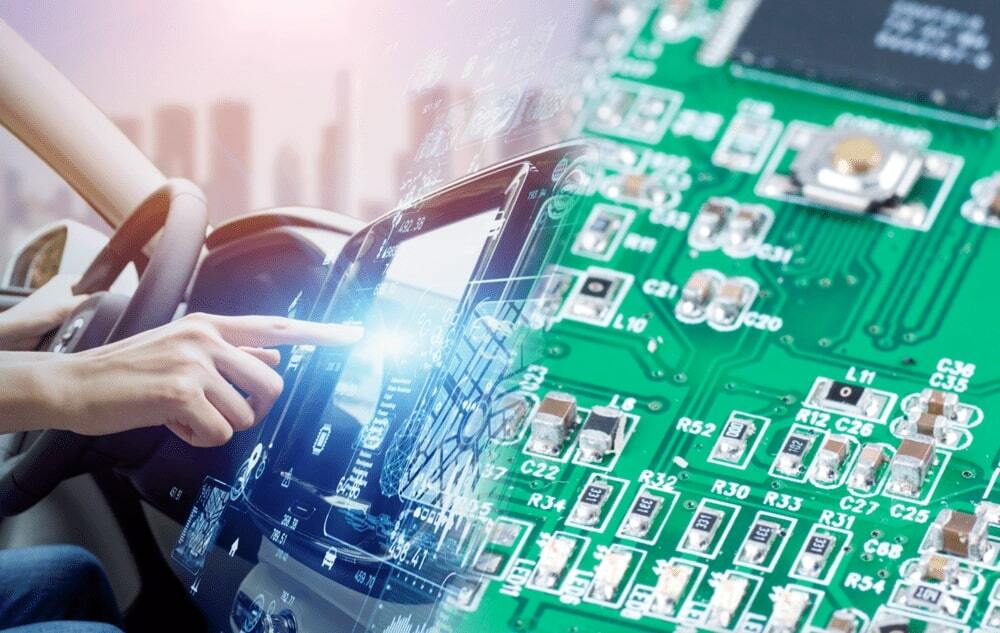Three Unique Ways AI Transforms PCB Manufacturing

By Emily Newton

Using AI PCB design software could raise productivity, and relying on the technology for other PCB manufacturing needs often gets companies closer to their goals. Let’s explore what’s possible.
1. Improving Quality Control
Quality control in PCB manufacturing can ensure the products that contain these components maintain their performance. Spotting defects early is one of the best ways to keep customer satisfaction high.
Cogiscan combines AI with the Industrial Internet of Things (IIoT) to eliminate production problems before they occur. If potential issues crop up, the tool sends email, text message or visual alerts to relevant parties. Such information allows them to take action faster.
Elsewhere, Koh Young Technology offers AI-powered automated optical inspection that gives accurate data about the true profilometric shapes of patterns, solder joints and other PCB components. The company also has an AI process optimizer that can adapt to industry challenges and improve results with machine learning.
However, AI-based quality control can even span outside the factory. For example, researchers have used predictive models to determine PCB surface failure likelihood due to corrosion. That’s important because many PCBs, such as those in cars, are regularly exposed to environmental conditions that could lead to corrosion. If manufacturers understand what typically causes deterioration-based failures in the real world, they make decision changes to control for those risk factors.
DarwinAI has built artificial intelligence into a visual inspection platform, hoping to tackle multiple challenges. Firstly, as PCBs become smaller and more complex, it’s harder for people to inspect them. It’s important to their functionality that the components are free of dust and other particles. Relatedly, companies often have difficulty recruiting and retaining quality inspection workers. CEO Sheldon Fernandez wanted to combine hardware, software and AI into a solution that was easy to bring into electronics manufacturing processes. While the company is still in the early stages, it could forever change how inspection happens.
2. Enabling AI PCB Design
PCB design options have already improved significantly in recent years. Researchers used 3D printing to make PCBs up to four layers thick. Many designers also collaborate with cloud-based tools to accelerate their processes. AI PCB design platforms could help them make the most appropriate decisions more efficiently.
Several companies already specialize in AI PCB design. All of them must differentiate in the market to successfully attract or keep users’ interest. Mycronic is a Swedish tech company that opened the Center for Deep Learning in Electronics Manufacturing in California while collaborating with other industry partners. The facility is a central place to develop and test Mycronic’s initiatives, with the aim of solving well-known problems in electronics. That might mean accomplishing AI PCB design frameworks faster than current methods allow. It could also entail finding solutions that help customers increase yields once they settle on the ideal PCB designs.
Since AI tools can handle huge quantities of data faster than humans, they could help users determine which designs will perform best and have the lowest failure rates. Alternatively, if a relatively new design starts showing faults, AI could pinpoint what went wrong and help designers avoid similar problems in the future. Other AI tools suggest the placement and routing of PCB components. Doing those tasks in the conventional way is time-consuming and requires manual precision. However, putting AI up to the task can save engineers’ time and allow them to get more done with fewer colleagues. Plus, since many products in this category operate in the cloud, people can collaborate with others from wherever they are.
In 2022, a company called Celus raised more than $25 million in a Series A funding round. Its product reportedly automates every step of PCB design. People no longer need to create schematics by hand. It also only takes minutes to switch one component out for another. That’s especially handy as so many companies are struggling with parts shortages.
Cadence Design Systems is another company moving into the AI PCB design space. The company already offers software-based tools — and some now include AI-powered features. These factors reportedly enable the design and qualification stages to occur 10 times faster than they do with conventional manual methods.
Several companies already specialize in AI PCB design. All of them must differentiate in the market to successfully attract or keep users’ interest.
3. Bringing More Consistency to PCB Manufacturing
PCB manufacturers pursue continuous improvement to stay competitive. They often begin producing progressively smaller components and need to do so at greater speeds to meet client demands. Using AI-powered robots in the factory is a practical and increasingly accessible option.
Some factories have automated material handling systems that increase the pace and flow of PCB assembly lines. Additionally, robots can do tasks that require high precision and repeatability, such as soldering. When people use robots for soldering compared to manual processes, the cost savings are often significant.
Manufacturers can also deploy robots for PCB assembly. The machines place components in the correct locations while maintaining accuracy and speed. People can also adjust a robot’s force sensor to prevent the machine from applying too much pressure to delicate parts.
Robots on the market may also combine PCB assembly with visual inspection. Investing in a machine that can do multiple tasks is an excellent way to get profitable results when purchasing an AI solution.
It takes time and careful thought to figure out if it’s the right time to use a robot for PCB manufacturing. Additionally, once a company installs it, employees need time to adjust to the new way of working. However, many manufacturing leaders find this approach pays off over the long term by optimizing their methods.
Outside of robots, companies may deploy AI modules that help them gradually increase the extent to which they rely on automation within PCB production. Critical Manufacturing — which specializes in helping companies reach Industry 4.0 aspirations — has a factory automation module that allows organizations to progressively increase the number of processes automated in their workflows. The company also has a manufacturing execution system that automatically collects data for later analysis.
Automation takes time to do well, but investments in this area can pay off. Humans can often make mistakes, especially when tired or under pressure. That reality can cause inconsistencies that result in problems within the factory or once products reach the market. Automation adds consistency that can reduce or eliminate those issues.
Artificial Intelligence Elevates PCB Manufacturing
Learning how to produce things faster and more accurately helps companies stay competitive. Pursuing those goals is especially important for PCB manufacturing as those products are necessary for so many of the appliances, cars, electronics and other things people want and need.
AI PCB design tools, robots and other opportunities highlight improved processes. The options described above are only some of the many avenues to explore, so the future looks bright.
Emily Newton is a tech and industrial journalist with over six years experience covering stories in the industrial sectors.












